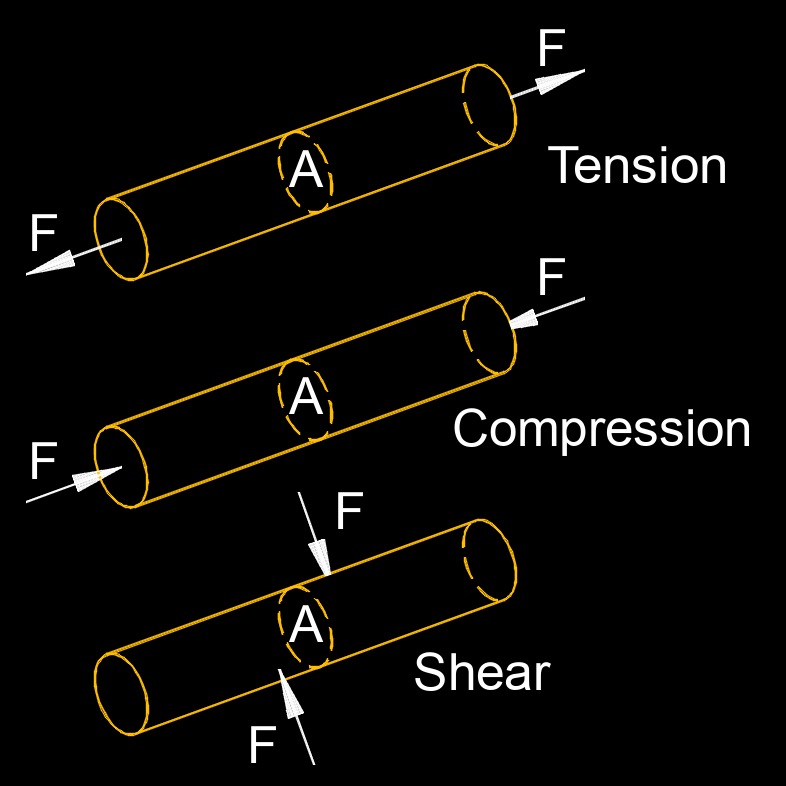Elastic Modulus
Elastic Modulus Formula |
||
|
\( \lambda \;=\; \dfrac{ \sigma }{ \epsilon }\) (Elastic Modulus) \( \sigma \;=\; \lambda \cdot \epsilon \) \( \epsilon \;=\; \dfrac{ \sigma }{ \lambda }\) |
||
| Symbol | English | Metric |
| \( \lambda \) (Greek symbol lambda) = Elastic Modulus (psi) | \(lbf \;/\; in^2\) | \(Pa\) |
| \( \sigma \) (Greek symbol sigma) = Stress (psi) | \(lbf \;/\; in^2\) | \(Pa\) |
| \( \epsilon \) (Greek symbol epsilon) = Strain | \(dimensionless\) | \(dimensionless\) |

Elastic modulus (Young's modulus), abbreviated as \(\lambda\) (Greek symbol lambda), also called modulus of elasticity, is a measure of a material's stiffness or ability to resist deformation under an applied force. The elastic modulus formula expresses the relationship between stress and strain in a material. The higher the elastic modulus, the greater the material's ability to withstand deformation without breaking or yielding.
The elastic modulus is an important property of materials, and is used in the design and analysis of many structures, including buildings, bridges, and aircraft. It is also used in the manufacture of various products, such as springs, cables, and metal beams, where a high level of stiffness is required.
Elastic modulus and Young's modulus are essentially the same thing, often used interchangeably to descrige a material's stiffness or resistance to elastic deformation under stress.
- See Articles - Young's Modulus / Young's Modulus of an Element

